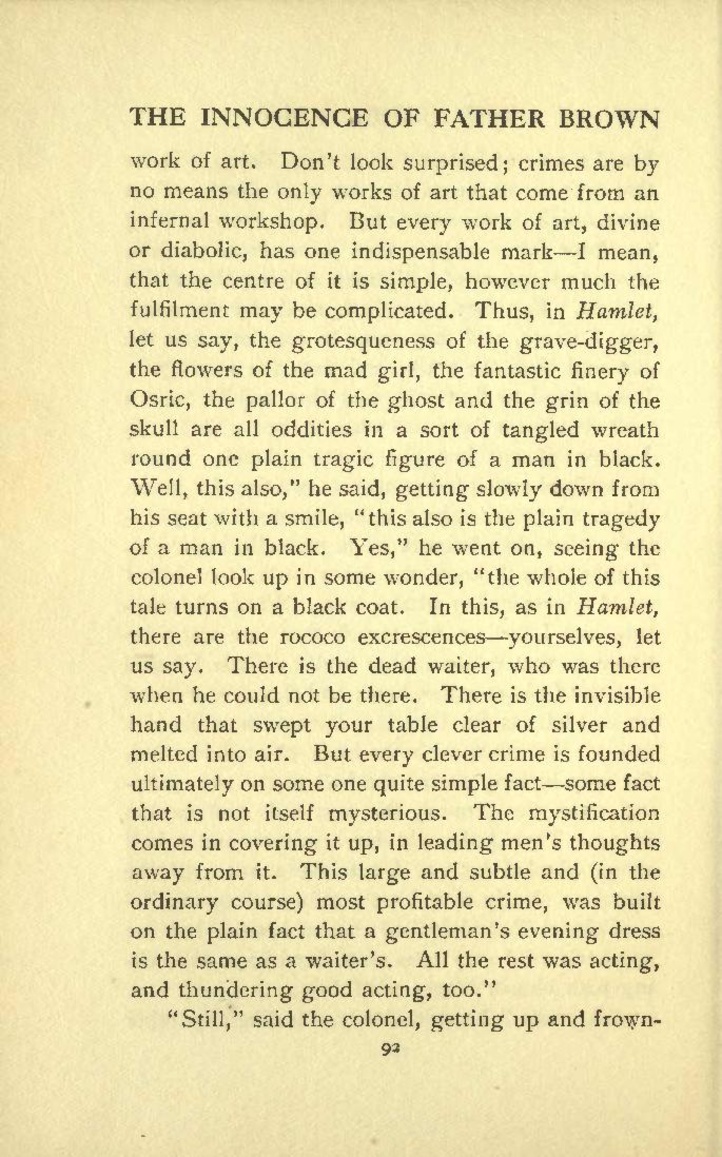THE INNOCENCE OF FATHER BROWN
work of art. Don't look surprised; crimes are by no means the only works of art that come from an infernal workshop. But every work of art, divine or diabolic, has one indispensable mark—I mean, that the centre of it is simple, however much the fulfilment may be complicated. Thus, in Hamlet, let us say, the grotesqueness of the grave-digger, the flowers of the mad girl, the fantastic finery of Osric, the pallor of the ghost and the grin of the skull are all oddities in a sort of tangled wreath round one plain tragic figure of a man in black. Well, this also," he said, getting slowly down from his seat with a smile, "this also is the plain tragedy of a man in black. Yes," he went on, seeing the colonel look up in some wonder, "the whole of this tale turns on a black coat. In this, as in Hamlet, there are the rococo excrescences—yourselves, let us say. There is the dead waiter, who was there when he could not be there. There is the invisible hand that swept your table clear of silver and melted into air. But every clever crime is founded ultimately on some one quite simple fact—some fact that is not itself mysterious. The mystification comes in covering it up, in leading men's thoughts away from it. This large and subtle and (in the ordinary course) most profitable crime, was built on the plain fact that a gentleman's evening dress is the same as a waiter's. All the rest was acting, and thundering good acting, too."
"Still," said the colonel, getting up and frown-
92
